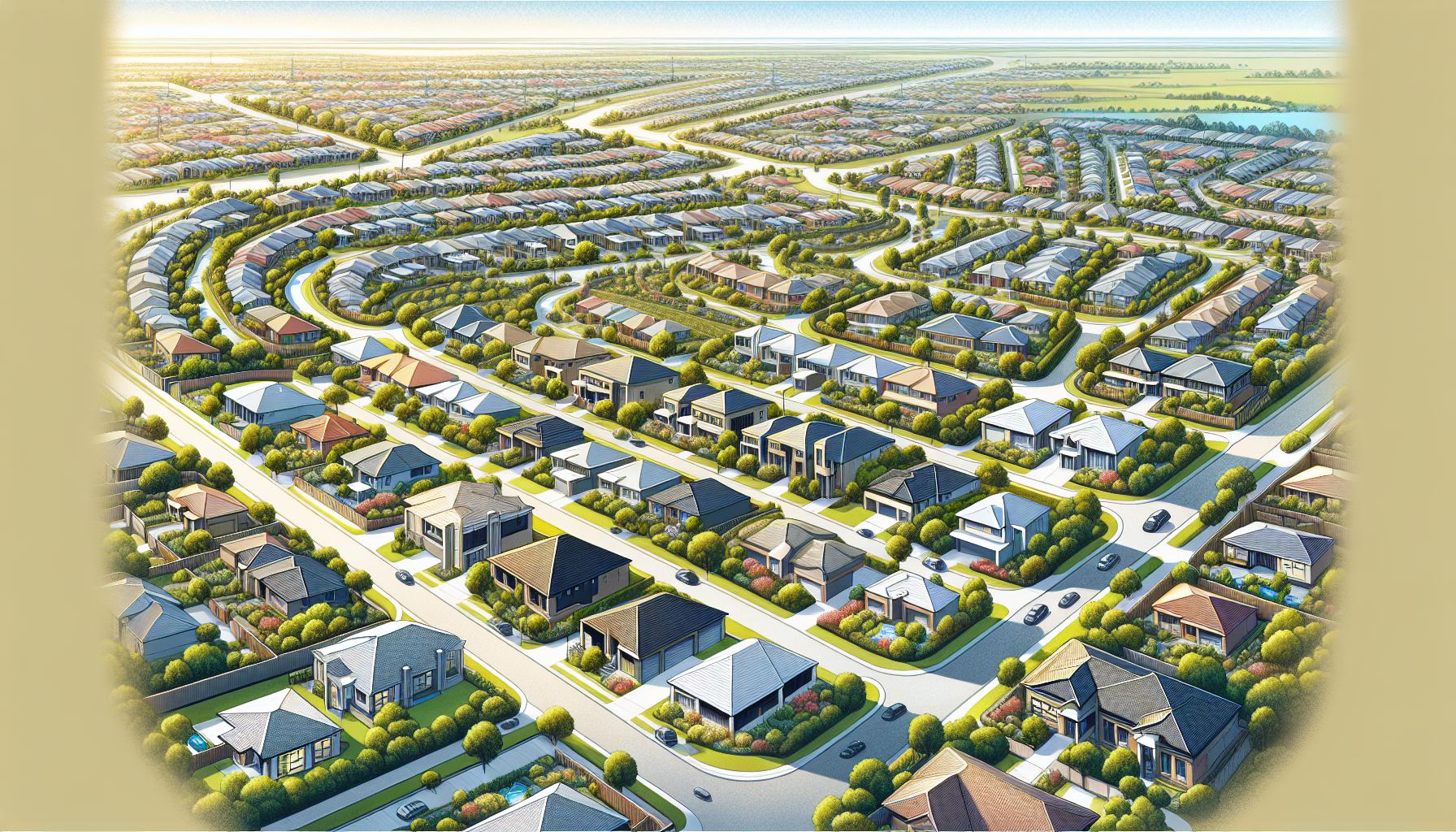Is Point Cook Safe? Exploring Neighbourhood Security and Community Spirit
Crime Rates in Point Cook
When I started looking into the safety of living in Point Cook, one of the first things I delved into was the crime rate. It’s a common benchmark for assessing safety, but numbers alone don’t always tell the whole story. I found that comparing these figures to broader city or national averages provided a clearer picture.
According to recent data, Point Cook’s crime rates are somewhat lower than those in many other suburbs of Melbourne. Here’s a quick look:
| Crime Type | Incidents in Point Cook | Melbourne Average |
|---|---|---|
| Property Crime | 1,200 | 1,800 |
| Violent Crime | 300 | 500 |
| Drug Offences | 50 | 80 |
It’s important to note that these figures can fluctuate annually, and trends in crime can offer more insights than a snapshot of data. What stood out to me was the relative rarity of violent crimes, which significantly contributes to the feeling of security within the community.
Diving deeper into these numbers, I chatted with some local law enforcement officials. They highlighted ongoing initiatives aimed at reducing crime further, particularly focusing on community engagement and visibility. This proactive approach seems to be paying dividends, with many locals telling me they rarely feel uneasy, even when walking alone at night.
Beyond statistics, the feeling of safety often comes down to personal experiences and community spirit. In Point Cook, the sense of community is strong. Neighbourhood watch programs are active and neighbours generally look out for each other. From conversations with long-time residents, it became apparent that there’s a shared commitment to maintaining a safe and welcoming environment for everyone. This collective vigilance acts as a deterrent to potential criminal activities, reinforcing the security of the area.
In exploring local forums and social media groups, stories of lost pets being returned and neighbours helping each other in times of need painted a picture of a caring and connected community. These anecdotes, while not directly related to crime rates, underscore the overall feeling of safety and belonging in Point Cook.
As I ventured through the suburb’s parks and shopping centres, the vibrant and peaceful atmosphere stood out. Families picnicking, kids playing freely, and couples enjoying leisurely walks—these everyday scenes added layers to my understanding of what safety truly means beyond the numbers.
Community Safety Initiatives
In my exploration of Point Cook’s safety, I’ve been particularly impressed by the wide array of community safety initiatives that contribute significantly to the area’s secure ambiance. These programs showcase not just the efforts of law enforcement, but also the active participation of residents in keeping their neighbourhood safe.
One standout initiative is the Neighbourhood Watch Program. It’s a classic approach to community safety that’s been modernised to suit Point Cook’s growing, diverse population. Through this program, residents keep an eye out for suspicious activities and collaborate closely with local police to report them. This collective vigilance has been pivotal in maintaining low crime rates in the area.
Another innovative approach is the Community CCTV Programme. This initiative involves the strategic placement of CCTV cameras in key locations around Point Cook. What makes it unique is the community’s involvement in monitoring these cameras. Volunteers, in partnership with local authorities, help oversee areas that are deemed vulnerable to criminal activities. This not only deters potential offenders but also assists in quick response to any incidents.
Local forums and workshops on safety and crime prevention represent yet another layer of Point Cook’s protective measures. These forums serve as platforms for:
- Education on personal and property safety.
- Discussions on contemporary crime trends and how to combat them.
- Sharing of success stories that encourage more community engagement.
The Point Cook Residents’ Association plays a pivotal role in organising these educational activities, fostering a communal culture of awareness and resilience against crime.
What’s particularly heartwarming is the level of participation in these initiatives. It’s not just about a handful of people showing up to meetings or a few faces continuously monitoring CCTV feeds. There’s a broad, enthusiastic involvement from various demographics across Point Cook. Young adults, seniors, and families, all contribute in their unique ways, whether it’s patrolling, attending meetings, or simply being informed and vigilant neighbours.
This collective spirit, this shared responsibility for each other’s safety, is what truly makes these safety initiatives effective. By pooling resources, knowledge, and manpower, Point Cook has managed not only to implement robust safety measures but also to cultivate a strong sense of community. It’s a model that I find both inspiring and reassuring as I delve deeper into what makes Point Cook such a safe place to live.
Exploring Neighbourhoods
When I commenced my exploration of Point Cook, I was eager to discover what makes each neighbourhood unique and how these characteristics contribute to the area’s overall safety. It’s fascinating to see the diversity and the sense of community that varies from one neighbourhood to another.
Sanctuary Lakes is renowned for its gated community, offering an extra layer of security that many residents appreciate. Here, I found the streets to be exceptionally quiet and the houses well-maintained, with residents nodding or waving as I passed by. It’s clear that there’s a strong sense of belonging here, possibly attributed to the shared amenities such as the golf course and club house, which seem to foster a tight-knit community.
Moving on, I ventured into Alamanda, another suburb within Point Cook, known for its family-friendly parks and active community centre. The Alamanda Cafe and Community Centre, in particular, serves as a hub for locals, hosting various events and activities that bring neighbors together. Such communal spaces are vital as they not only offer recreational opportunities but also serve as places where residents can look out for each other, contributing to the area’s safety.
In contrast, Saratoga presents a newer development, bustling with construction and young families moving in. The energy here is palpable, with playgrounds and community gardens being established, indicating a growing communal spirit. Although it’s still developing its identity, the investment in communal facilities and open spaces suggests a promising future for Saratoga as a safe and engaging neighbourhood.
Throughout my neighbourhood exploration, a recurring theme has been the active role of residents in fostering safe and welcoming communities. From the gated tranquility of Sanctuary Lakes to the bustling new developments in Saratoga, it’s apparent that the people of Point Cook take pride in their neighbourhoods. They’ve shown me that safety doesn’t merely come from external security measures but from the strength of the community bonds and the collective efforts to create a supportive environment.
Meeting people from various parts of Point Cook has been enlightening. Each conversation has offered insights into how residents collectively contribute to maintaining the safety and integrity of their neighbourhoods. Whether it’s through formal neighbourhood watch programs or informal gatherings, the sense of community here is undeniable.
Conclusion
After delving into the unique aspects of Point Cook’s neighbourhoods it’s clear that the area’s safety isn’t just about the physical security measures in place. It’s about the people. From Sanctuary Lakes to Saratoga the sense of community is palpable. Residents don’t just live side by side; they look out for each other creating a real sense of belonging.
What stands out to me is how community involvement directly impacts the area’s safety. It’s a testament to the power of collective effort in creating a secure environment. So if you’re wondering whether Point Cook is a safe place to live the answer is a resounding yes. It’s the community spirit that makes it so.




